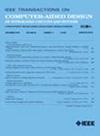Retention Accelerated Testing for 3-D QLC nand Flash Memory: Characterization, Analysis, and Modeling
IF 2.7
3区 计算机科学
Q2 COMPUTER SCIENCE, HARDWARE & ARCHITECTURE
IEEE Transactions on Computer-Aided Design of Integrated Circuits and Systems
Pub Date : 2025-01-03
DOI:10.1109/TCAD.2025.3526055
引用次数: 0
Abstract
3-D保留加速测试的3-D QLC闪存:表征,分析和建模
3-D nand闪存由于其出色的存储密度和成本效益,已经变得非常流行,现在广泛应用于数据中心和移动设备中。具有电荷阱(CT)结构的3-D四能级单元(QLC) nand闪存可以在每个单元中存储4位,从而实现更大的存储容量。但是,牺牲数据可靠性以换取更大的容量。数据保留的寿命对于非易失性存储至关重要。因此,Arrhenius模型在寿命预测和高温加速试验中发挥着重要作用。有趣的是,通过分析三维QLC闪存的数据保留特性,我们发现传统的Arrhenius模型是不准确的。为了准确预测数据寿命并进行加速实验,提出了基于不同参数影响的表观活化能(Ea)变化的经验模型。该模型提供了与温度和循环有关的Ea参数表,可用于高温加速度测试。同时,我们观察到40°C数据保留时间映射与其他温度之间存在线性关系。利用外延数据对修正Ea模型和经典Arrhenius模型的效果进行了评价,发现修正Ea模型能最大限度地减少约70%的误差。
本文章由计算机程序翻译,如有差异,请以英文原文为准。
求助全文
约1分钟内获得全文
求助全文
来源期刊
CiteScore
5.60
自引率
13.80%
发文量
500
审稿时长
7 months
期刊介绍:
The purpose of this Transactions is to publish papers of interest to individuals in the area of computer-aided design of integrated circuits and systems composed of analog, digital, mixed-signal, optical, or microwave components. The aids include methods, models, algorithms, and man-machine interfaces for system-level, physical and logical design including: planning, synthesis, partitioning, modeling, simulation, layout, verification, testing, hardware-software co-design and documentation of integrated circuit and system designs of all complexities. Design tools and techniques for evaluating and designing integrated circuits and systems for metrics such as performance, power, reliability, testability, and security are a focus.

 求助内容:
求助内容: 应助结果提醒方式:
应助结果提醒方式:


